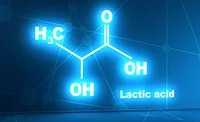Cyclosporiasis outbreaks and the challenges facing produce processors

In 2018, a foodborne pathogen with many unique challenges caused an outbreak of 761 cases of foodborne illness in the United States. An initial outbreak in June, as well as a more recent outbreak affecting 250 people in September 2018, seemed to stem from consumption of contaminated vegetable trays. The CDC has attributed other recent outbreaks of this food-borne illness to contaminated lettuce, basil and cilantro. The outbreak resulted in several food recalls and even caused McDonald’s to stop selling salads in over 3,000 locations.
The culprit behind all this?
Cyclospora.
Understanding Cyclospora’s risks to public health
Cyclospora is a parasite that is spread by food or water contaminated with feces. Cyclospora can lead to cyclosporiasis, an intestinal infection that causes diarrhea, stomach cramps and pain, bloating, loss of appetite, nausea, fatigue and flu-like symptoms such as vomiting and body aches. Instances of cyclosporiasis can range in severity, as some can experience relatively no symptoms, while others experience severe symptoms. Untreated cyclosporiasis can last for weeks or months, and those infected can experience symptom relapses over time.
Currently, Cyclospora is generally associated with imported produce, but it is increasingly becoming a concern in produce grown in the U.S. as well. In addition to fears about potentially contaminated vegetables, there is increasing worry about contaminated berries due to increased consumption of healthy foods. Some researchers have found that sources of contamination could include water for irrigation or spraying, soil and water run-off, and the sanitation practices of farm workers who hand-pick produce.
Food safety challenges
The spread of Cyclospora can be hard to prevent, as the parasite seems to be resistant to routine chemical disinfection and sanitizing methods. Further, it is often difficult to trace a single source or point of contamination in the compromised products.
Cyclospora may also cling to certain foods more than others; in particular, Clyclospora adheres to the hairs on raspberries, making them a more effective vehicle for transmission than berries with smooth surfaces. These factors are all barriers to curbing potential transmission of Cyclospora. So, it is something produce processors and food safety solutions providers must work to address.
Looking for quick answers on food safety topics?
Try Ask FSM, our new smart AI search tool.
Ask FSM →
Preventing Cyclospora contamination
Food manufacturers should follow safe handling practices for produce, ensure thorough cleaning and sanitation practices, and adhere to good manufacturing processes (GMPs) with a specific focus on hand sanitation. It’s also important that food manufacturers further educate themselves on the transmission of Cyclospora and other food safety hazards and work toward building effective food safety programs.
With more and more cases of cyclosporiasis appearing in the U.S., food safety experts are combing through the latest research to develop ways to tackle the problem. Additionally, the Center for Produce Safety is funding research projects at U.S. universities to add to the knowledge base on this emerging pathogen. If you’re looking for direction on measures to take against the spread of cyclospora, identify partners who can provide more information on getting ahead of potential cyclosporiasis outbreaks.








